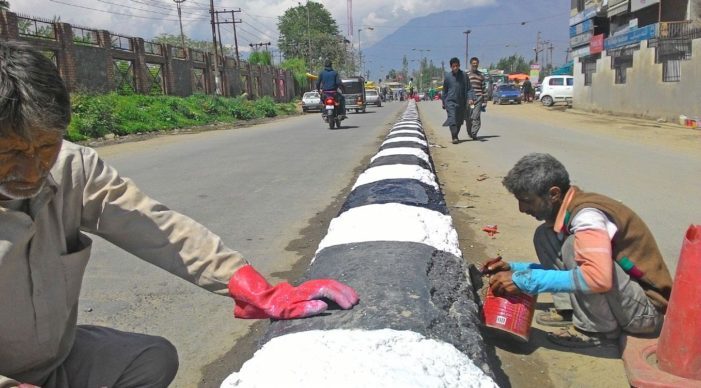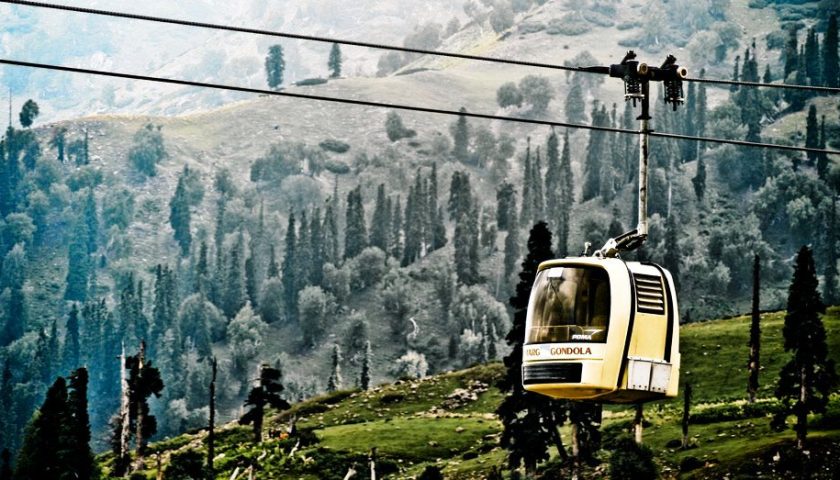Migrant labourers gain millions odd day jobs every year
Kashmir’s indigenous workforce is showing an ever decreasing participation in skilled and unskilled sectors, leaving millions of day-jobs for migrant labour from different states of India to pick up.
According to the 2011 census, there are about six lakh non-local skilled and unskilled labourers engaged in different vocations in Kashmir. From snacks sellers to hawkers, from plumbers to carpenters, and barbers to masons, it is migrant labour from Bihar, Uttar Pradesh, Rajasthan, Delhi and other Indian states who run the show.
Kashmiri craftsmen are also switching over to other occupations because returns from crafts are diminishing with shrinking market share. However, the Kashmiri labourers that move away from traditional crafts seldom take up jobs created by development sector, agriculture, private constructions or other sectors.
In fact, there is a tremendous urge for government employment, which makes people strive for such opportunities. People leave their traditional crafts in pursuit of employment in governance sector, disconnecting themselves from their traditional crafts.
On the other hand, few labourers who are still competing for jobs with migrant labour force find themselves at a certain disadvantage. People say that they prefer migrant labourers to locals because of difference in wages and output.
The current situation with regard to employment is a complete contrast to 1970s and 80s that was regarded as the Era of Development. Peerzada Mohammed Ishfaq, a sociologist at Kashmir University, says that education and social upward mobility were at their peak during this era.
“People found the occupational shift necessary,” he says. “The shift also became a reason for cultural and identity crises. Earlier people used to take forward their family crafts like farming, carpentry, etc. After they enlightened themselves with learning, there was a change in their mindset that left doors open for a ‘social change’,” he observes.
“Education and knowledge broadens the mind, but in case of Kashmiris it proved false as they found it below their dignity to continue with their ancestral vocations to avoid the disgrace of caste system related to their work.”
Ishfaq says that the mindset of looking down at a craft was strengthened so much that manual worker, or association with lower classes of society, is considered to be a social stigma. “People prefer not be married into families involved in these ‘low class vocations’.”
With the result, sociologists believe, Kashmiri youth looked for jobs that have more acceptance in the society, especially the middle class.
“While a few of them find such jobs, the rest run from pillar to post to get a government job and waste a major part of their lives in such pursuits,” says Ghulam Mohammad Lone, a teacher from Srinagar.
In the 2014-15 Economic Survey of Jammu and Kashmir, the figure of men and women that could work and were not hired was put at 490205. Till March 2017, out of this, 53,899 unemployed youth were registered with the government employment exchange in Srinagar. Out of them, 74 are illiterate, 31, 135 have passed higher secondary school, 14005 are diploma holders, 579 are professional degree holders and the rest 1361 are ITI trained.
Across all districts in Jammu and Kashmir, 231899 unemployed youth were registered in employment exchanges in all districts of Jammu and Kashmir.
Noted sociologist at Central Asian Studies in Kashmir University, Dr. Tariq Ahmad Rather considers labour sacred – the thing that gives societies the basis to survive. No profession, he says, is or below another. “But here in Kashmir, people allow outsiders to take up job opportunities. People from places like Bihar and Uttar Pradesh are just filling the gaps,” he says. “If we didn’t leave our ancestral vocations, such a condition would not have arisen. We are being compared with Bihar for the number of labourers that come here from there.”
As per Census 2011, there were five to six lakh non-local labourers engaged in different vocations in Kashmir. They include both skilled and un-skilled work class.
During winters, many of the non-skilled workers choose to leave the valley. However, some skilled workers like barbers and tailors stay back to work through the cold season. In most cases, due to the extended stay that their work entails, they bring their families with them. Some are even married in Kashmir.
Asif, 35, a barber in Srinagar’ Parraypora neighborhood, is married to a girl from Bandipora. Asif was born in Kashmir and has never been to his native village in UP.
“I was born and brought up here and I can relate with the locals easily,’’ he says with a smile.
While some migrant labourers like Arif have assimilated into the Kashmir society and culture, the presence of others in the valley is seen threatening because of the “social disorder” they bring.
“Migrant labourers introduced various crimes, diseases,” says Dr. Rather. “Two decades earlier, there were no slums, but due to continuous flow of these so called ‘tourists’ in the valley, slums can be seen everywhere.”
“Some time back, the same situation had taken place in North-East, when Bangladeshis had come for trade purpose there. Slowly and gradually, they began to settle down and at last formed a whole community there. Now, they are not ready to go back and North-Eastern people are facing a great challenge. We need to shake our conscience, otherwise forget about the freedom struggle, we’ll have to deal with a Bihari incursion,” says Mudasir Ahmad, a researcher.
If one drives around in the morning, there are hordes of labourers in Chanapora, Alamgari Bazar, Shivpora, Hawal and other areas.
“The notion in the minds of people in Kashmir is that to be a labourer means to be illiterate. People are turning over-ambitious, forgetting one’s culture and identity. It is a somber matter, we cannot turn blind eye towards this grave issue,” says Dr. Rather.
While there is alarm, there are practical considerations for hiring migrant labourers instead of their local counterparts. “Kashmiris have become lazy and sluggish and in a work schedule of about 7-8 hours, much time is spent on tea, puffing hookah, etc.,” says Rauf Ahmed, a government employee. “Also earning money through shortcuts is pulling Kashmiris off the skill ladder. They’ll choose begging instead of working hard,” he says.






